Related Research Articles

Alexis Andrew Nicholas Koerner, known professionally as Alexis Korner, was a British blues musician and radio broadcaster, who has sometimes been referred to as "a founding father of British blues". A major influence on the sound of the British music scene in the 1960s, he was instrumental in the formation of several notable British bands including The Rolling Stones and Free.

Keith Jarrett is an American pianist and composer. Jarrett started his career with Art Blakey and later moved on to play with Charles Lloyd and Miles Davis. Since the early 1970s, he has also been a group leader and solo performer in jazz, jazz fusion, and classical music. His improvisations draw from the traditions of jazz and other genres, including Western classical music, gospel, blues, and ethnic folk music.

Henry "Hank" Mobley was an American tenor saxophonist and composer. Mobley was described by Leonard Feather as the "middleweight champion of the tenor saxophone", a metaphor used to describe his tone, that was neither as aggressive as John Coltrane nor as mellow as Lester Young, and his style that was laid-back, subtle and melodic, especially in contrast with players like Coltrane and Sonny Rollins. The critic Stacia Proefrock claimed him "one of the most underrated musicians of the bop era." Mobley's compositions include "Double Exposure," "Soul Station", and "Dig Dis," among others.

Carl Frederick Kendall Palmer is an English drummer best known as a founding member of the supergroups Emerson, Lake & Palmer and Asia. He has toured with his own bands since 2001, including Palmer, the Carl Palmer Band, and currently, Carl Palmer's ELP Legacy. He previously was a touring drummer for The Crazy World of Arthur Brown and a founding member of Atomic Rooster.

Mulgrew Miller was an American jazz pianist, composer, and educator. As a child he played in churches and was influenced on piano by Ramsey Lewis and then Oscar Peterson. Aspects of their styles remained in his playing, but he added the greater harmonic freedom of McCoy Tyner and others in developing as a hard bop player and then in creating his own style, which influenced others from the 1980s on.

Art Blakey and the Jazz Messengers is a studio album by Art Blakey and the Jazz Messengers, released in January 1959 by Blue Note Records.

John Josephus Hicks Jr. was an American jazz pianist, composer, and arranger. He was leader of more than 30 recordings and played as a sideman on more than 300.
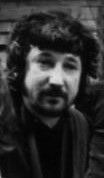
Richard Edwin Morrissey was a British jazz musician and composer. He played the tenor saxophone, soprano saxophone and flute.
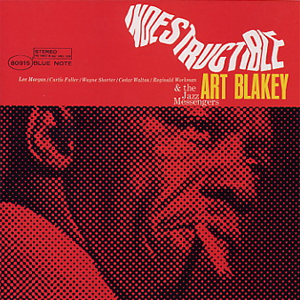
Indestructible is a jazz album by drummer Art Blakey and his Jazz Messengers. It was recorded in 1964 but not released until 1966, and was Blakey's last recording for Blue Note. The bonus track featured on the CD reissue was originally issued on Pisces.

The Flock was an American, Chicago-based jazz rock band, that released two albums on Columbia Records in 1969 and 1970. The Flock did not achieve the commercial success of other Columbia jazz-rock groups of the era such as Chicago and Blood Sweat & Tears, but were recognized for featuring a violin prominently in their recordings. The violinist, Jerry Goodman, went on to become a member of Mahavishnu Orchestra and a solo artist.

Colin Hodgkinson is a British rock, jazz and blues bassist, who has been active since the 1960s.

Genius of Modern Music, Vols. One & Two are a pair of separate but related 12" compilation albums by American jazz pianist Thelonious Monk released on Blue Note in 1956.
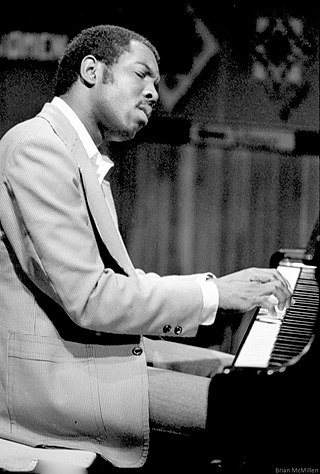
James Williams was an American jazz pianist.

Child's Dance is an album by drummer Art Blakey and The Jazz Messengers recorded in 1972 and released on the Prestige label.

In This Korner is a live album by drummer Art Blakey and the Jazz Messengers recorded at the Keystone Korner in San Francisco in 1978 and released on the Concord Jazz label.

Back Door is the eponymously titled debut studio album of Back Door, released independently in 1972 by Blakey Records. It received wider distribution when it was adopted by Warner Bros. the following year. It introduced the group's virtuoso approach to jazz, funk, soul, blues and hard rock music. In 2005, the album was listed on JazzTimes' top fifty albums released between 1970 and 2005. In 2014 it was re-released on CD, compiled with 8th Street Nites and Another Fine Mess, by BGO Records.

Another Fine Mess is the third studio album by Back Door, released in 1975 by Warner Bros. Records. "Blakey Jones" is a tribute to Brian Jones, landlord of the Lion Inn on Blakey Ridge, an early supporter of the band who helped finance the recording of their first album. A display case of Back Door memorabilia still exists in the Lion Inn.
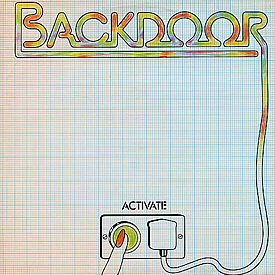
Activate is the fourth studio album by Back Door, released in 1976 by Warner Bros. Records. It was produced by Carl Palmer, known for his drumming in the bands Atomic Rooster and ELP. Original member Tony Hicks had left the band before recording the album and had been replaced by Adrian Tilbrook on drums. After the release of Activate, the band played less and less together, and eventually broke up around 1977.

The Human Bed is a live album by Back Door, released on 3 June 2002 by Hux Records and compiled from three sessions for BBC Radio 1. It takes its name from the composition "The Human Bed", first released on 1972's Back Door. The album, made between 1 March 1973 and 12 May 1974 at the BBC, includes four previously unreleased tracks.
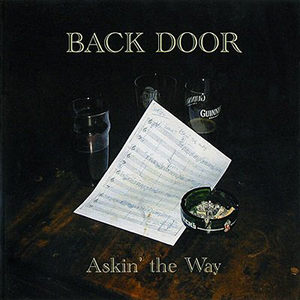
Askin' the Way is fifth studio album by Back Door, released in 2003 by Cultural Foundation. Featuring the original line-up of Ron Aspery, Tony Hicks and Colin Hodgkinson, the album comprises re-recordings of previously released songs and newly recorded compositions. It is the Back Door's first new material since 1976's Activate. John Fordham of The Guardian called the album "a guffawing, raw-edge cruise over a boogie bassline that makes you feel you're right there with them in the crowded pubs in which they honed this style."
References
- 1 2 Fordham, John (3 January 2004). "Obituary: Ron Aspery". The Guardian . Retrieved 20 March 2011.
- 1 2 Colin Larkin, ed. (1992). The Guinness Who's Who of Jazz (First ed.). Guinness Publishing. p. 396/7. ISBN 0-85112-580-8.
- ↑ Collins, Paul. "Back Door". AllMusic . Retrieved 19 January 2016.
- ↑ Gilbert, Mark (2014). "Review: Back Door, Back Door et al". Jazz Journal. Archived from the original on 26 January 2016. Retrieved 19 January 2016.
- ↑ "BBC - Radio 1 - Keeping It Peel - Back Door". BBC. Retrieved 5 July 2017.
- ↑ Fordham, John (17 April 2003). "Back Door: Askin' the Way". The Guardian . Retrieved 19 January 2016.